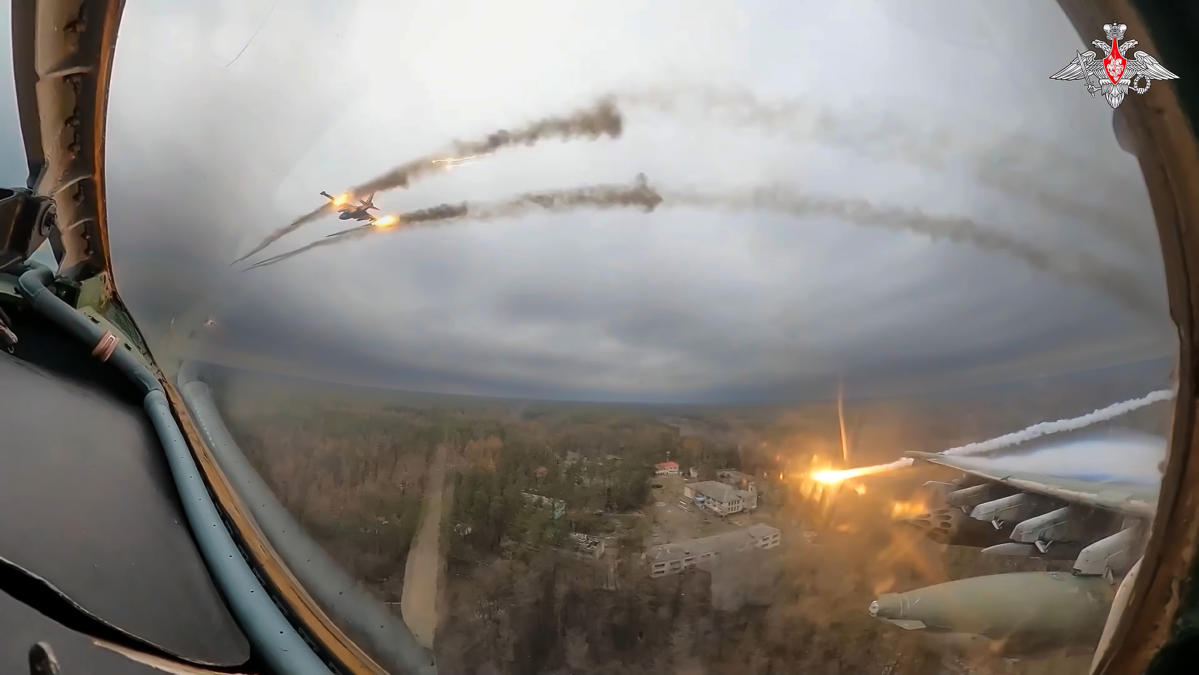Russian troops are increasing pressure on exhausted Ukrainian forces to prepare to seize more land this spring and summer, as muddy fields dry out and roll tanks, armored vehicles and other heavy equipment into key positions across the countryside.
As the war in Ukraine enters its third year and a vital US aid package for Kiev has been stalled by Congress, Russia has increasingly used satellite-guided hover bombs – which allow aircraft to drop them from a safe distance – to target Ukrainian forces ravaged by a shortage of troops and ammunition.
Despite Moscow’s advantage in firepower and personnel, a large-scale ground offensive would be risky and – say Russian military bloggers and other experts – unnecessary if Russia can stick to smaller attacks along the front line to further deplete the Ukrainian army.
“It’s potentially a slippery slope where you get death by a thousand cuts or essentially death by a thousand local offensives,” Michael Kofman, a military expert at the Carnegie Endowment, said in a recent podcast to describe Russian tactics. If the Russians continue their frequent attacks along the front, he said, “they may eventually find more and more open ground.”
Ukraine’s counter-offensive last summer was doomed to failure when advancing Ukrainian units became trapped in vast Russian minefields and slaughtered by artillery and drones. The Russians have no reason to make the same mistake.
UKRAINIAN FORCES Exposed
Last November, Ukrainian President Volodymyr Zelenskyy ordered his troops to build trenches, fortifications and bunkers behind the 600-mile (1,000-kilometer) front line, but analysts say construction work was progressing slowly, leaving areas unprotected.
“If the defense lines had been built in advance, the Ukrainians would not have withdrawn in such a way,” said Ukrainian military expert Oleh Zhdanov. “We would have had to dig trenches during the fall and that would have stopped the Russian advance. Now everything is coming to light, which makes it very dangerous.”
In a recent podcast, Kofman also said that Kiev is “quite behind in effectively entrenching the front” and that “Ukraine does not have good secondary lines.”
After capturing the Ukrainian stronghold of Avdiivka, Russian forces are targeting the hill town of Chasiv Yar, allowing them to move towards Sloviansk and Kramatorsk, key cities in the Kiev-controlled part of the Donetsk region in eastern Ukraine. Russia illegally annexed Donetsk and three other regions in 2022, and the Kremlin considers full control of that region a priority.
Zhdanov said Ukraine does not have the firepower to repel Russian attacks.
“They promised to have a defense line 10 kilometers behind Avdiivka where our troops could dig in, but there is none,” he said.
Gen. Christopher Cavoli, head of the U.S. European Command, sounded the alarm to Congress last week, warning that Ukraine will be defeated ten to one by Russia within weeks if Congress does not approve more military aid.
IN THE FACE OF RUSSIA
After securing a new term in office in a predetermined election in March, President Vladimir Putin pledged to establish a “sanitary zone” to protect Russia’s border areas from Ukrainian shelling and incursions.
Putin gave no details, but Russian military bloggers and security analysts said that, along with a slow advance through the Donetsk region, Moscow could also try to take Ukraine’s second-largest city, Kharkov, which Russia has done in recent tried for a period of time and was unable to take it. opening days of the war.
In a possible sign of an impending attack on Kharkiv, a city of 1.1 million people about 20 miles (30 kilometers) south of the border, Russia has stepped up attacks on power stations in the area, causing significant damage and causing power outages.
Ukraine does not have sufficient air defenses to protect Kharkiv and other cities, and the continued Russian attacks are part of Moscow’s strategy to “suffocate” the country by destroying infrastructure and forcing residents to leave, Zhdanov said.
Retired Lt. Gen. Andrei Gurulev, now a member of the defense committee of Russia’s lower house of parliament, acknowledged that capturing Kharkov is a major challenge and predicted that the army would try to encircle the area.
“It can be enveloped and blocked,” he said, adding that taking Kharkov would open the way for an attack deep into Ukraine and require more Russian troops.
After Putin’s order for the “partial mobilization” of 300,000 reservists last fall proved so unpopular that hundreds of thousands fled abroad to avoid being drafted, the Kremlin tried a different approach: It promised relatively high wages and other benefits to help its troops strengthen with volunteer soldiers. . The move appears to be paying off as Defense Minister Sergei Shoigu said the military has recruited 540,000 volunteers by 2023.
“There are no plans for a new wave of mobilization,” Viktor Bondarev, deputy head of the defense affairs committee in the upper house of parliament, said in comments carried by state news agency RIA Novosti. “We are doing well with the combat capability we have.”
___
Follow AP’s reporting at https://apnews.com/hub/russia-ukraine






